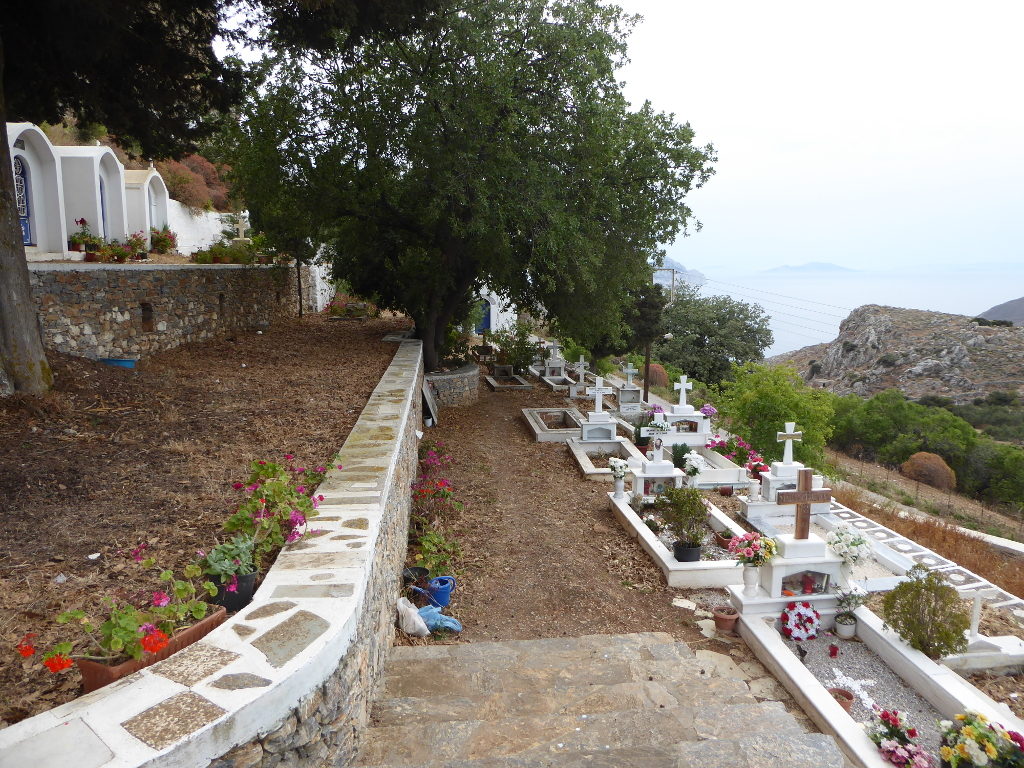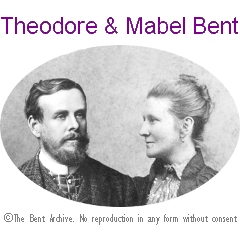I was prompted to write more about the ‘Syra British Cemetery‘ after reading Gerry Brisch’s fascinating account of the life of one the Bents’ friends and key ‘fixers’, Her Britannic Majesty’s Consul to Syra, William Binney, who helped ease the Bents’ travels around the Cyclades by way of letters of introduction to mayors, priests and other prominent figures throughout the islands.
These days, the island of Syros doesn’t figure too prominently on the radar of many non-Greek visitors to the Cyclades, and the three cemeteries, Orthodox, Catholic and British, on the road between the lower town and the ‘Catholic’ upper town, receive even fewer visitors.
After the Greek War of Independence started in 1821, the then-sparsely-populated Syros grew rapidly to become the commercial and administrative centre of the Greek Aegean world, earning it the sobriquet of ‘The Capital of the Cyclades’. Theodore and Mabel Bent were constantly drawn back to the island because of its position as the transport ‘hub’ which enabled them to explore further afield in Greece and beyond (see the interactive maps of their travels)
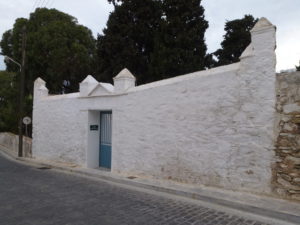
The ‘Syra British Cemetery’ illustrates the importance of Syros to Her Britannic Majesty’s Foreign Office following the foundation of the modern Greek state in 1832, until its pre-eminence was later eclipsed by King Otto’s new capital of Athens and its port of Piraeus. Like other British overseas cemeteries, located in many a corner of a foreign field, the Syros cemetery reveals some of the human sacrifices of those who served the Empire and suffered sickness and death far from home.
As Gerry Brisch tells us, the ‘Syra British Cemetery’ holds the grave of the Bents’ friend, William Binney, whose tombstone epitaph reads:
To the memory
of William Pryor Binney
H.B.M. Consul
Divisional Manager Eastern
Telegraph Company
Born in Halifax Nova Scotia
Canada
the 21th July 1839
died at Syra the 12th March 1888.
The Lord gave and the Lord
hath taken away Blessed be
the name of the Lord
Job I21.
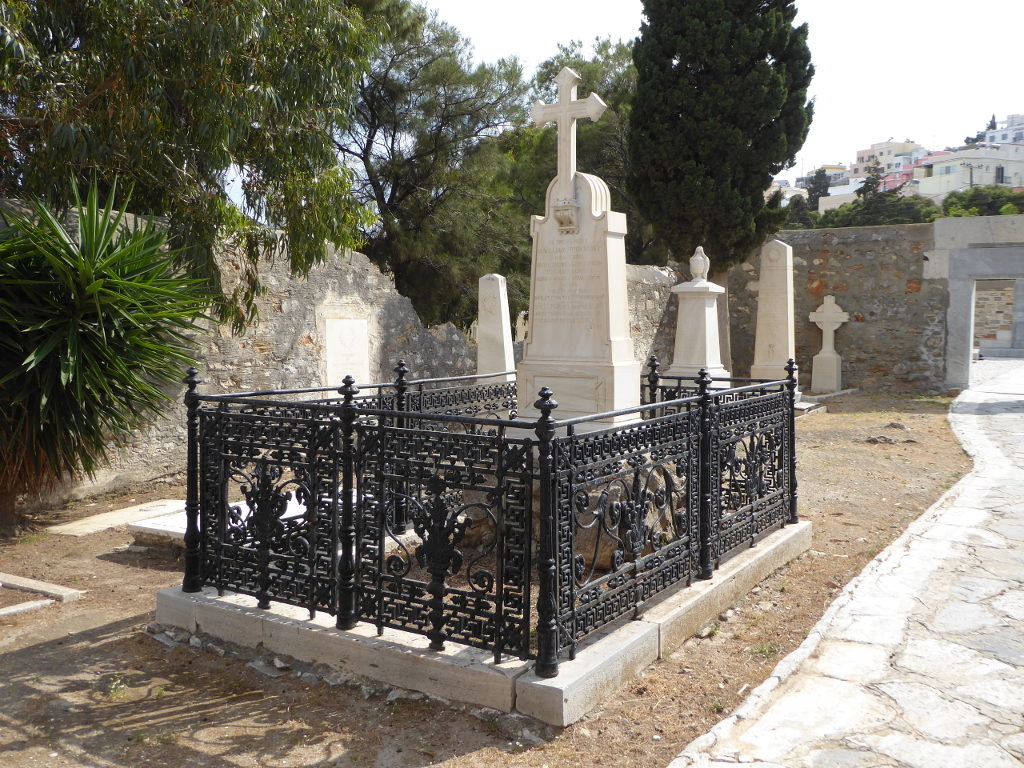
Although the grave of HBM Consul William Binney, is the grandest in the tiny cemetery, there are also the graves of two former British consuls.
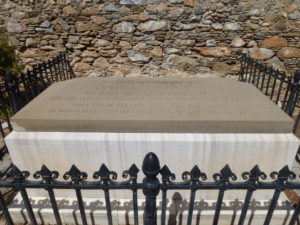
Binney’s predecessor, St. Vincent Lloyd, had been HBM Vice-Consul for the state of Wallachia in 1838 where he later made a name for himself by supporting the 1848 revolutionaries who went on to found the united Romanian state. December 14th, 1861 sees him promoted to Consul in Syros where it would seem he remained until his death in 1884. Part of his epitaph reads:
Sacred to the memory of St. Vincent Lloyd Esq., for many years H.B.M. Consul Syra, who died here 25th February 1884, in the 74th year of his age.
Lloyd’s promotion had been prompted by the death of another HBM Consul in Syra, Richard Wilkinson, in 1861. Two Wilkinson graves tell the story of tragic family grief.
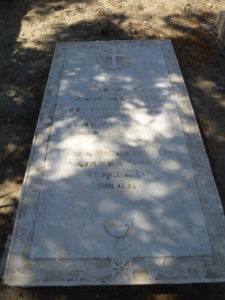
Richard Wilkinson had been born in Smyrna, now Izmir, in 1783 and died in Syros on 26th September, 1861. Records exist showing him as HBM Consul in Syros in 1838 , one of five consuls stationed in important cities throughout the fledgling Greek state, the others being in Patras, Pyrgos, Napoli and Piraeus. With the exception of the Patras Consul, their role was primarily trade, highlighting the commercial importance of the island of Syros at that point in its history.
The epitaph on Richard Wilkinson’s grave reads:
Sacred to the memory of
Richard Wilkinson Esqr.
H B M Consul in Syra and its
dependencies
Born in Smyrna Dec 12 1783
Died in Syra Sep 26 1861
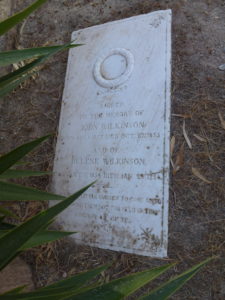
The other Wilkinson family grave holds the tiny bodies of John Wilkinson and Helene Wilkinson; John died in October, 1855 aged just over 2 years, while Helene survived just a few days over 3 months of age and died in January, 1856, three months after the death of her elder brother. Were they Richard Wilkinson’s grandchildren, or possibly even his own children conceived late in life? Either way, the grave evokes a time of great sorrow for Richard Wilkinson and his family.
One can only imagine the added heartache that the misspelt epitaph would have caused:
Sacred
to the memory of
John Wilkinson
born Aug. 1, 1853 died Oct. 27, 1855
and of
Helene Wilkinson
born Oct. 17, 1855 died Jan. 28, 1856
Suffer the little children to come unto
me, and forbid them not for such is the
Kingdom of Godt (sic)
Mark X, 14
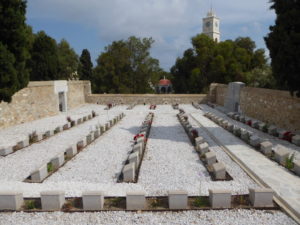
During the First World War, Britain was fighting in two campaigns in the region, one against the Turks at Gallipoli, the other against the allied German, Austro-Hungarian and Bulgarian forces on the Macedonian front. The seaborne lines of communication and supply for these campaigns ran through the Aegean Sea, and the islands of the Cyclades were a favourite hunting ground of German submarines. British war graves were to be found on several islands of the Cyclades, mostly containing the bodies of sailors and soldiers washed ashore from torpedoed ships. Many came from the sinking of the transport ship ‘Arcadian’ on April 15th, 1917. In 1921, the small ‘Syra British Cemetery’ was extended to take the scattered graves from all the islands. It contains 111 British graves including those of 30 sailors. See the Commonwealth War Graves Commission website for detailed information.
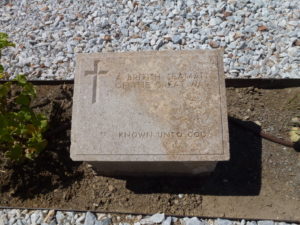
Some forty years after the Bents’ travels in the Cyclades, another British traveller, Vincent Clarence Scott O’Connor, retraced the footsteps of the Bents through the islands and drew upon Theodore’s experiences and writings. O’Connor’s book, ‘Isles of the Aegean’, was published in 1929. While following Theodore to the village of Langada on the island of Amorgos, O’Connor met a kafeneion (café) owner whose grisly account supplements the history of the ‘Syra New British Cemetery’:
. . . I went over to the Kapheion, where the life of every little town and village in Greece moves upon the surface. The owner joined us at a table and began to talk of his experiences during the Great War. “During the war,” he said, “English ships constantly passed up and down the Aegean to Salonica, Egypt and India. Some were sunk, and we became accustomed, even here in Amorgos which was out of the way of their traffic, to finding the bodies of their dead floating on the sea. One of these ships, the Arcadian, was torpedoed off Siphnos, and one day as I walked along the cliffs at Acroteri with my gun, looking for partridge, I saw a cask floating on the sea. I got a boat and went out to it, and found the bodies of two British soldiers in khaki who had been drowned. I brought them ashore and buried them, together with eight others, who had been cast upon the rocks one by one. I got the Papa to come with me and recite the burial service over their remains, which he willingly did for they were Christian men. We desired their souls to rest in peace. Their identification discs I handed to the Greek control at Livadhi. Two years after these events British officers came here from Syra, photographed the graves I had made, measured their distance from the sea, and took away their bones for burial in the British cemetery on that island. But I found afterwards that the body of one man had been overlooked, and there were other fragments that had come on shore; these I carried up on my back to our cemetery here and buried them, asking the Papa once more to read the service over them; and for this I paid him. I was glad to do these things, for they were Englishmen, and Christians.”
I never managed to find the final resting place of that last man buried in the Langada cemetery – maybe you can be more successful – let us know.
(For more on the Bents in Greece, see Theodore’s classic volume on the Cyclades and Mabel’s travel Chronicles, available from Archaeopress, Oxford)
